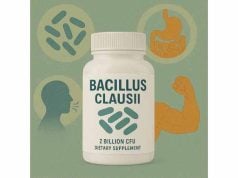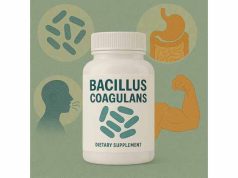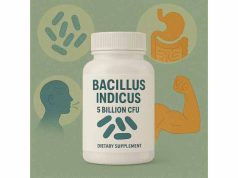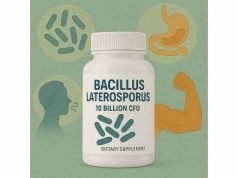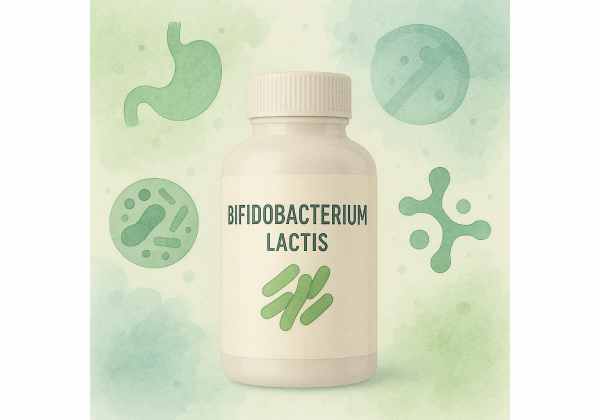
Bifidobacterium lactis, often listed as B. lactis on supplement labels, is a highly researched probiotic bacterium celebrated for its ability to support digestive wellness, immune function, and overall gut health. Naturally found in the human gastrointestinal tract and in fermented foods like yogurt, B. lactis is prized for its resilience—surviving harsh stomach acids to reach the colon, where it helps restore balance to the microbiome. Studies show B. lactis may improve regularity, ease symptoms of irritable bowel syndrome (IBS), reduce bloating, and enhance immune defenses, making it a popular choice for both daily wellness and targeted digestive support. If you’re curious about how B. lactis could benefit you or your family, this in-depth guide covers everything you need to know.
Key Takeaways
- Bifidobacterium lactis supports digestive regularity, immune health, and gut balance, making it ideal for daily wellness and specific digestive issues.
- Research highlights B. lactis’s ability to ease constipation, reduce bloating, and support a healthy immune response.
- This probiotic strain is found in many foods and high-quality supplements, known for surviving stomach acid and colonizing the gut.
- Safe for most ages, but those with weakened immune systems or serious illnesses should consult a healthcare provider before use.
- For best results, use products with clearly labeled strains and recommended dosages, and follow storage instructions for maximum effectiveness.
Table of Contents
- Bifidobacterium lactis Explained: What It Is and How It Works in the Human Body
- The Science Behind B. lactis: Understanding Its Biological Effects and Mechanisms
- Clinically Proven Benefits and Evidence-Based Uses of Bifidobacterium lactis
- Comprehensive Safety Profile, Side Effects, and Interaction Risks of Bifidobacterium lactis
- Bifidobacterium lactis Dosage: Best Practices and Usage Guidelines for All Ages
- Top FAQs about Bifidobacterium lactis: Digestion, Immunity, and Supplementation
Bifidobacterium lactis Explained: What It Is and How It Works in the Human Body
Bifidobacterium lactis is a species of beneficial bacteria in the Bifidobacterium genus, naturally found in the human gut from infancy through adulthood. Sometimes labeled as B. lactis, Bifidobacterium animalis subsp. lactis, or by specific strain codes like HN019 or BB-12, this probiotic is widely recognized for its resilience, effectiveness, and versatility in promoting gastrointestinal and immune health.
Where Does B. lactis Come From?
- Naturally Present: B. lactis is a normal, healthy resident of the large intestine, helping to keep the balance between “good” and “bad” microbes.
- Found in Foods: It is also present in some fermented dairy products like yogurt, kefir, and certain cheeses, as well as in many probiotic supplements.
- Supplement Form: B. lactis strains are freeze-dried and encapsulated or combined with prebiotics (fiber that feeds good bacteria) for maximum effectiveness and shelf stability.
How Does B. lactis Work in the Body?
B. lactis’s benefits stem from its ability to survive stomach acid and reach the colon, where it:
- Crowds Out Harmful Bacteria: By taking up space and nutrients, B. lactis reduces the growth of unwanted microbes that can cause bloating, irregularity, and discomfort.
- Ferments Dietary Fiber: B. lactis breaks down complex carbohydrates and fiber into short-chain fatty acids (SCFAs) like acetate, propionate, and butyrate, which help nourish colon cells, reduce inflammation, and support gut lining integrity.
- Boosts Immune Defense: This strain supports the gut’s immune cells, encouraging the production of protective antibodies and helping train the immune system to respond appropriately to threats without overreacting.
Unique Features and Adaptations
- Resilience: B. lactis is particularly resistant to stomach acid and bile, making it highly effective when taken as a supplement.
- Genetic Adaptability: It has the tools needed to metabolize a wide range of fibers and sugars, supporting its growth and beneficial functions in the gut.
- Compatibility: B. lactis works synergistically with other beneficial bacteria and can be combined with other probiotics for broader digestive support.
Who Can Benefit from B. lactis?
- Children and Adults: B. lactis is suitable for nearly all ages, supporting the microbiome through changing life stages.
- Digestive Health Seekers: Anyone looking to improve regularity, ease mild digestive discomfort, or recover gut balance after antibiotics.
- Immune System Support: Those who want to boost their immune defense, especially during seasonal changes or stressful times.
Why Choose B. lactis over Other Probiotics?
Compared to other probiotic strains, B. lactis is one of the most extensively studied for both safety and effectiveness. Its well-documented health effects and minimal side effect profile make it a top choice for those new to probiotics as well as long-time users.
Forms and Sources
B. lactis can be consumed through:
- Fermented Foods: Yogurt, kefir, and select cheeses
- Probiotic Supplements: Capsules, powders, and functional foods
- Combination Formulas: Often paired with other strains and prebiotics for enhanced benefits
By choosing products with clear strain identification (like B. lactis HN019 or BB-12), you ensure the quality and expected effects of the supplement.
Summary
Bifidobacterium lactis is a robust, versatile probiotic with a unique ability to promote gut and immune health across the lifespan. Its presence in foods and supplements makes it easy to add to your routine, and its safety profile gives peace of mind to users of all ages.
The Science Behind B. lactis: Understanding Its Biological Effects and Mechanisms
To truly appreciate Bifidobacterium lactis, it helps to understand what happens at the microscopic level when you consume this probiotic. B. lactis is much more than a passive passenger in your digestive system—it is an active, dynamic participant in the health of your gut and whole body.
How Does B. lactis Survive and Thrive in the Gut?
- Acid and Bile Tolerance: Unlike many bacteria, B. lactis has natural defenses that let it survive harsh stomach acids and bile salts in the small intestine. This means more live bacteria reach your colon, where they can do the most good.
- Adhesion to Intestinal Walls: B. lactis can attach to the mucosal lining of the intestine, helping to create a physical barrier against pathogens and supporting the gut’s protective functions.
- Utilization of Prebiotics: This probiotic feeds on non-digestible fibers (prebiotics) in your diet—like inulin, fructooligosaccharides, and galacto-oligosaccharides—boosting its growth and activity in the colon.
Key Biological Effects
- Production of Short-Chain Fatty Acids (SCFAs):
- B. lactis breaks down complex carbohydrates into SCFAs, especially acetate and butyrate.
- SCFAs serve as energy for colon cells, strengthen the gut barrier, and reduce inflammation.
- Competitive Exclusion of Harmful Bacteria:
- By rapidly multiplying and occupying niches in the gut, B. lactis limits the ability of harmful bacteria to colonize, thus reducing the risk of digestive infections and inflammation.
- Immune System Training:
- B. lactis helps “train” immune cells in the gut to distinguish between friendly and harmful microbes.
- It promotes the production of immunoglobulin A (IgA) and other protective factors that defend against pathogens.
- Enzymatic Activity and Nutrient Synthesis:
- This probiotic aids in the digestion of lactose (milk sugar), which can be especially helpful for those with lactose sensitivity.
- B. lactis may also contribute to the synthesis of some B vitamins and the absorption of minerals like calcium and magnesium.
Scientific Insights and Latest Research
- Gut-Brain Axis: Recent studies are investigating B. lactis’s influence on the gut-brain connection, suggesting it may play a role in mood regulation and stress response by interacting with neurotransmitters and immune pathways.
- Anti-Inflammatory Potential: Research shows B. lactis can lower levels of certain inflammatory markers in the gut and bloodstream, offering promise for those with inflammatory digestive conditions.
- Metabolic Health: There is emerging evidence that B. lactis may help regulate blood sugar and cholesterol levels by modifying how the body processes fats and carbohydrates.
Factors Affecting Effectiveness
- Strain Specificity: Not all B. lactis strains are the same. Clinical effects depend on the exact strain and the number of live CFUs delivered.
- Synergy with Other Probiotics: When combined with other beneficial bacteria (like Lactobacillus or other Bifidobacterium species), B. lactis may offer broader and more potent health effects.
What Happens After You Take B. lactis?
- Colonization: Within hours, B. lactis makes its way to the large intestine, temporarily colonizing and interacting with existing microbiota.
- Immediate and Lasting Effects: Some benefits, such as improved regularity, may be noticed within days, while immune and metabolic effects build gradually over weeks or months.
Why Is the Microbiome So Important?
Your gut microbiome—the community of trillions of bacteria in your digestive tract—affects nearly every aspect of health, from digestion and nutrient absorption to immune defense, mood, and more. B. lactis plays a starring role in keeping this ecosystem balanced and healthy.
Summary
Bifidobacterium lactis is scientifically validated for its ability to survive the digestive tract, support immune defenses, crowd out harmful bacteria, and produce beneficial compounds that nourish your body from the inside out. Choosing the right strain and formulation is essential for unlocking these benefits.
Clinically Proven Benefits and Evidence-Based Uses of Bifidobacterium lactis
Bifidobacterium lactis is one of the most extensively researched probiotic strains, with multiple clinical studies confirming its positive effects on digestive health, immune resilience, and even certain metabolic processes. Here’s a closer look at the most important, evidence-based uses for B. lactis.
1. Supporting Digestive Comfort and Regularity
One of the top reasons people choose B. lactis is for relief from occasional constipation, bloating, and irregular bowel movements. Clinical studies show that B. lactis:
- Improves Bowel Regularity: Supplementation helps normalize stool frequency and consistency, making it helpful for both constipation and loose stools.
- Reduces Bloating and Gas: B. lactis supports better breakdown of fibers and less gas production, easing feelings of abdominal distension.
- Assists with Mild IBS Symptoms: While not a cure, B. lactis can ease some of the discomfort, cramping, and irregularity associated with irritable bowel syndrome.
2. Enhancing Immune Health
B. lactis is unique among probiotics for its well-documented effects on the immune system. Clinical research has demonstrated that B. lactis can:
- Boost Immune Cell Activity: Increases the production and function of natural killer (NK) cells and other immune defenders.
- Reduce Incidence of Common Infections: Regular use is linked to fewer respiratory and gastrointestinal infections, especially in children and older adults.
- Promote Recovery from Illness: B. lactis may shorten the duration of common colds or flu-like symptoms.
3. Benefits for Children and Infants
Because it is naturally present in the infant gut, B. lactis is widely used in formulas and supplements for children. Its benefits include:
- Promoting Gut Maturity in Infants: Supports healthy colonization, especially for babies born by C-section or fed with formula.
- Reducing Risk of Diarrhea: Lowers the risk and severity of diarrhea during infections or after antibiotics.
- Decreasing Eczema and Allergies: Some studies show that early supplementation with B. lactis may reduce the risk of eczema and allergic responses in children.
4. Support During and After Antibiotic Use
Antibiotics can disrupt the balance of gut bacteria, leading to digestive upset. B. lactis helps restore beneficial microbes, reduce the risk of antibiotic-associated diarrhea, and support a return to normal gut function.
5. Emerging Benefits: Metabolic and Mental Wellness
Recent research suggests B. lactis may:
- Help Regulate Blood Sugar: By modulating gut hormones and improving glucose metabolism, B. lactis may aid in blood sugar control.
- Support Healthy Cholesterol Levels: Some strains have been linked to small reductions in LDL (“bad”) cholesterol.
- Contribute to Mental Wellbeing: Through the gut-brain axis, B. lactis may play a role in reducing mild anxiety and promoting a balanced mood.
Who Stands to Benefit Most?
- Adults and Children with Digestive Irregularities: Anyone dealing with constipation, occasional diarrhea, or bloating.
- Those Prone to Infections: Children in daycare, older adults, or anyone during cold and flu season.
- Individuals Recovering from Illness or Antibiotics: B. lactis can help restore and maintain a healthy gut microbiome.
How to Choose a Product for Your Needs
- Strain Matters: Look for reputable strains like B. lactis BB-12, HN019, or Bi-07.
- CFU Count: Aim for products with at least 1 billion CFU per serving for daily maintenance; higher doses may be needed for specific conditions.
- Prebiotic Support: Combination with prebiotics can enhance colonization and effects.
Limitations and Realistic Expectations
While B. lactis provides impressive benefits, it is not a substitute for medical treatment of chronic or serious diseases. Its effectiveness may vary depending on individual health status, diet, and consistency of use.
Summary
Bifidobacterium lactis offers clinically supported advantages for digestive regularity, immune protection, and even metabolic health. Its strong safety profile and versatility make it one of the best probiotic choices for people of all ages.
Comprehensive Safety Profile, Side Effects, and Interaction Risks of Bifidobacterium lactis
Understanding the safety of any supplement is just as important as knowing its potential benefits—especially when it comes to probiotics used daily by adults, children, and even infants. Bifidobacterium lactis stands out for its robust track record of safety and tolerability, but, like all supplements, there are important considerations to ensure optimal results and minimize risks.
General Safety Overview
Bifidobacterium lactis has been used for decades in foods, infant formulas, and dietary supplements around the world. Health authorities classify it as Generally Recognized as Safe (GRAS), meaning it is considered non-pathogenic (does not cause disease) and well-tolerated in healthy individuals of all ages.
- For Healthy Adults and Children: Most people can take B. lactis daily without any adverse effects. It’s one of the most commonly studied strains in clinical research, supporting its safety across a wide range of ages.
- For Infants: Used in many infant formulas and drops, B. lactis is considered safe for healthy babies, including those born by cesarean section or given antibiotics early in life.
Possible Side Effects
For the majority of users, side effects are mild, rare, and typically limited to the first few days of use as the body’s microbiome adjusts. The most common temporary effects include:
- Mild bloating or gas
- A change in stool consistency (softer or more frequent)
- Occasional mild abdominal discomfort
These effects usually disappear within a week. Taking B. lactis with food, staying hydrated, and starting with a lower dose can help minimize any discomfort during this adjustment period.
Rare and Serious Reactions
While extremely uncommon, there are some cases where caution is warranted:
- Severely Immunocompromised Individuals: People with very weakened immune systems (due to chemotherapy, organ transplant, or advanced HIV/AIDS) should consult a doctor before starting any probiotic, as there is a very small risk of infection or bacteremia.
- Hospitalized Patients or Those with Central Venous Catheters: On rare occasions, probiotics (not limited to B. lactis) have been linked to bloodstream infections in very high-risk hospital settings.
Drug and Supplement Interactions
Bifidobacterium lactis is generally free from major drug interactions, but a few guidelines are worth noting:
- Antibiotics: Antibiotics can reduce the effectiveness of B. lactis by killing beneficial bacteria alongside pathogens. It’s typically recommended to take probiotics at least two hours apart from antibiotics.
- Immunosuppressants: Anyone taking strong immunosuppressant medications should check with their healthcare provider before adding a probiotic to their regimen.
- Other Probiotics and Prebiotics: B. lactis can be safely combined with other probiotics and prebiotic fibers for enhanced gut health, but dosing should be adjusted according to age and overall digestive tolerance.
Special Populations: Who Should Exercise Extra Caution?
- Pregnant and Breastfeeding Individuals: B. lactis is widely used in prenatal and postnatal supplements and is considered safe, but it’s always smart to check with your healthcare provider.
- People with Food Allergies: Some probiotic products contain dairy, soy, or gluten as fillers or growing mediums. Always read labels carefully if you have sensitivities or allergies.
- Chronic Health Conditions: Anyone with a serious underlying illness should get personalized advice before adding new supplements, even those with a strong safety record.
What to Watch For and When to Stop
If you experience severe or persistent symptoms (such as ongoing severe abdominal pain, fever, or blood in the stool), discontinue use and seek medical attention. Allergic reactions to the probiotic itself are rare, but possible if you’re sensitive to certain ingredients in the supplement formulation.
Summary Table: B. lactis Safety Considerations
| Group | Safety Status | Precautions |
|---|---|---|
| Healthy adults/children | Safe | Start at recommended dose |
| Infants (formula-fed/colicky) | Safe, often beneficial | Use age-appropriate formula |
| Immunocompromised | Use with medical guidance | Monitor for infection |
| Those on antibiotics | Safe, but stagger dosing | 2+ hours apart from antibiotic doses |
| Pregnant/breastfeeding | Generally safe | Check with healthcare provider |
| Allergy-prone individuals | Safe, check for allergens | Read labels carefully |
Key Points to Remember
- Choose high-quality supplements from reputable brands, with clear strain information and third-party testing.
- Follow product instructions for dosage and storage (many require refrigeration to maintain potency).
- Consistent, moderate use is safe for most people, but seek medical advice for any unexpected or concerning symptoms.
Bifidobacterium lactis Dosage: Best Practices and Usage Guidelines for All Ages
Getting the most from Bifidobacterium lactis depends on using the right dosage, formulation, and timing for your needs. Probiotic benefits are dose-dependent and strain-specific, so following expert guidelines and product directions is essential.
Typical Dosages for Adults
Most clinical studies with B. lactis use daily dosages between 1 billion and 10 billion CFU (colony-forming units). Some products provide up to 20 billion CFU per serving for targeted support, but higher is not always better—consistency is more important.
- General Digestive Maintenance: 1–5 billion CFU per day
- For Constipation, IBS, or Bloating: 5–10 billion CFU per day
- After Antibiotics or During Illness: 10–20 billion CFU per day for a short duration, then return to maintenance levels
Dosage Guidelines for Infants and Children
- Infant Formulas: Usually provide around 100 million to 1 billion CFU per day (check product labels)
- Probiotic Drops/Powders: Designed for easy mixing with breast milk, formula, or soft food
- Children’s Chewables or Powders: Formulated with age-appropriate CFU levels
Always use pediatric formulations for infants and children, and consult a pediatrician if uncertain.
How to Take B. lactis for Maximum Effectiveness
- With or Without Food: Most B. lactis supplements can be taken at any time, but some evidence suggests better survival when taken with meals.
- Timing: Take probiotics at the same time each day for best results. If taking with antibiotics, space them out by at least two hours.
- Storage: Many B. lactis products require refrigeration to maintain potency. If using a shelf-stable formula, store in a cool, dry place.
Best Practices for Consistent Results
- Start Slowly: If new to probiotics, begin with a lower dose and increase gradually to allow your gut to adjust.
- Stay Hydrated: Drink plenty of water to support digestion and help the bacteria establish in your gut.
- Support with Prebiotics: Eating a fiber-rich diet (whole grains, vegetables, bananas, oats) helps feed B. lactis and other beneficial microbes.
Product Quality Matters
- Strain Identification: Look for the specific strain on the label (e.g., B. lactis BB-12, HN019, Bi-07), as different strains offer slightly different benefits.
- CFU Count at Expiry: The label should guarantee the number of live CFUs through the “best by” date, not just at manufacturing.
- Third-Party Testing: Choose brands that test for potency, purity, and the absence of contaminants.
When to Expect Results
- Digestive Benefits: Most people notice improvements within a few days to a week.
- Immune Support: Immune benefits are often observed over weeks or months of regular use.
- Long-Term Use: Probiotics are safe for daily, ongoing use unless otherwise directed by your healthcare provider.
When to Consult a Healthcare Provider
- If you have a chronic health condition, take immunosuppressive drugs, or are pregnant/breastfeeding.
- If you experience persistent digestive distress, allergic reactions, or other concerning symptoms.
- If you’re considering probiotic use for infants or young children with medical issues.
Dosage Summary Table
| Group | Typical Dosage (CFU/day) | Form | Notes |
|---|---|---|---|
| Healthy adults | 1–5 billion | Capsule, powder | Maintenance |
| Adults (digestive) | 5–10 billion | Capsule, powder | IBS, bloating, constipation relief |
| After antibiotics | 10–20 billion (short-term) | Capsule, powder | Rebalance gut flora |
| Children | 1–5 billion | Chewable, powder | Age-appropriate products |
| Infants | 100 million–1 billion | Powder, drops | Use pediatric formulas and guidance |
Practical Tips for Success
- Consistency is key—daily use yields the best outcomes.
- Choose products from trusted manufacturers with transparent labeling and storage guidelines.
- Pair probiotics with a healthy lifestyle, including balanced nutrition, hydration, and regular activity, for optimal gut and immune support.
Top FAQs about Bifidobacterium lactis: Digestion, Immunity, and Supplementation
What is Bifidobacterium lactis used for?
Bifidobacterium lactis is primarily used to improve digestive regularity, ease constipation and bloating, support immune health, and help restore gut balance after antibiotics or illness.
Is Bifidobacterium lactis safe for daily use?
Yes, B. lactis is safe for daily use in healthy adults, children, and infants. Those with compromised immune systems should consult a healthcare provider before starting any probiotic.
How long does it take for Bifidobacterium lactis to work?
Digestive improvements may be noticed within a few days to a week, while immune and overall wellness benefits usually build over several weeks of consistent use.
Can infants and children take Bifidobacterium lactis?
Yes, B. lactis is used in many infant formulas and children’s supplements. Always choose age-appropriate products and consult your pediatrician if unsure.
Should Bifidobacterium lactis be taken with food or on an empty stomach?
Most B. lactis supplements can be taken with or without food, but some people tolerate them better with meals. Follow product instructions for best results.
Does Bifidobacterium lactis interact with antibiotics or other medications?
B. lactis can be used alongside antibiotics but should be taken at least two hours apart. It has no major drug interactions, but consult your healthcare provider if you are on medication.
Are there any long-term risks to taking Bifidobacterium lactis?
Long-term use is considered safe for most people. Rarely, mild digestive changes may occur, especially when first starting. Monitor your response and consult a professional if you have concerns.
Disclaimer:
This article is for educational purposes only and is not a substitute for medical advice, diagnosis, or treatment. Always consult a qualified healthcare provider before starting any supplement, especially if you have health conditions or are pregnant, breastfeeding, or taking medication.
If you found this guide helpful, please share it with friends or on social media like Facebook or X (formerly Twitter), and consider following us for more science-backed wellness tips. Your support helps us continue delivering high-quality, trustworthy health information!



